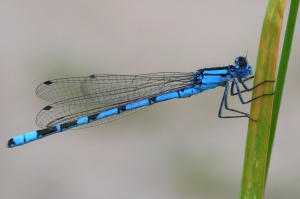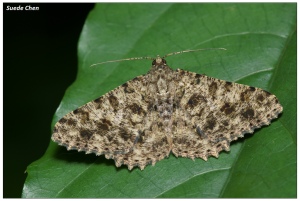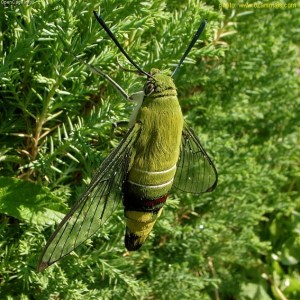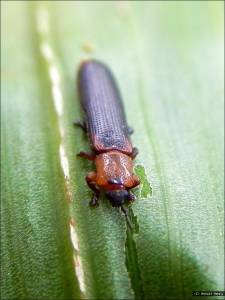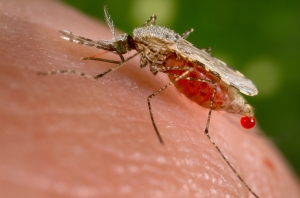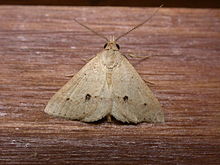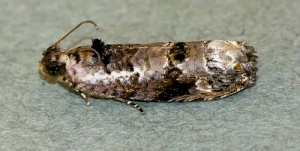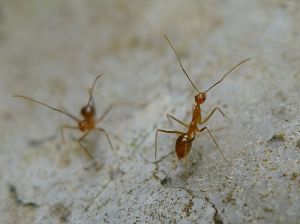Family: Coenagrionidae | Species: Enallagma maldivensis | Endemic: Yes | IUCN Classification: Critically Endangered
Not much is currently known about these critically endangered damselflies that are endemic to the Maldives. Their biggest threat that they face is sea level rise with the Maldives. As we know this is a pressing issue for the entire archipelago, where the limited land cover is overrun with development. They need freshwater to survive, as that is their natural habitat.
Family: Tortricidae | Species: Statherotis leucaspis | Endemic: No | IUCN Classification: Not evaluated
These moths are found all throughout Southeast Asia and the Indian Ocean. Their wingspans range from 13.5-14mm for males and 12-15mm for females.
Family: Geometridae | Species: Racotis boarmiaria | Endemic: No | IUCN Classification: Not evaluated
This species of moth is also found throughout the Indian Ocean and the islands within it. Their wingspans range from 45-48mm, about 3 times larger than the Statherotis leucaspis.
Family: Sphingidae | Species: Cephonodes picus | Common Name: Bee Hawk | Endemic: No | IUCN Classification: Not evaluated
These bee hawks are given their name for their transparent wings that they have (displayed in the picture) after they shed the scales from their wings as adults. They are found throughout Southeast Asia, and are very large. Their wingspans are approximately 5cm across.
Family: Chrysomelidae | Species: Brontispa longissima | Common Name: Coconut Leaf Beetle | Endemic: No | IUCN Classification: Not evaluated
These beetles have become increasingly notorious as a pest throughout Southeast Asia. These insects feed on the soft fleshy parts of most coconut producing trees, stunting their growth that impacts production, and sometimes even leads to the death of the tree. They are small, being just 7.5-10mm long and 1.5-2mm wide, but they can do a lot of damage in droves.
Family: Culicidae | Species: Anopheles subpictus | Endemic: No | IUCN Classification: Not evaluated
Like most mosquitos, these little guys carry a lot of dangerous diseases. They can be found all over the Austrolasian realm, and if you’re lucky you won’t get bitten by one carrying malaria. They have also been known as vectors of helminths (parasitic worms) and encephalitis (swelling of the brain).
Family: Noctuidae | Species: Gesonia obeditalis | Endemic: No | IUCN Classification: Not evaluated
As a caterpillar, this moth is yellow with brown stripes and feeds on different grasses. As an adult, it’s wingspan can be about 20mm across.They are found throughout the Indian Ocean, Australia, and Eastern Africa.
Family: Tortricidae | Species: Dudua aprobola | Endemic: No | IUCN Classification: Not evaluated
These caterpillars are semi-translucent, and they feed on small flowers of agricultural plants, and eventually grows to about 2cm long before metamorphosis occurs. Their moth wingspan will be about 1.5cm.
Family: Formicidae | Species: Anoplolepis gracilipes | Common Name: Yellow Crazy Ant | Endemic: No | IUCN Classification: Not evaluated
This yellow crazy ant, sometimes called the Maldive ant is recognized as one of the world’s most invasive species. They are known for being aggressive and will overrun other species of ants. Their origin and natural habitat is unknown, but they have done damage in all parts of the world being introduced to different regions by humans. It gets its name from its crazy movements when disturbed.
Sources:
http://biodiversity.mongabay.com/animals
Click to access 13374-0bba732bf9dfa85a4f0cd036b5a26f6d0.pdf
http://www.iucnredlist.org/details
http://lepidoptera.butterflyhouse.com.au/sphi/picus.html
http://lepidoptera.butterflyhouse.com.au/cato/obeditalis.html
